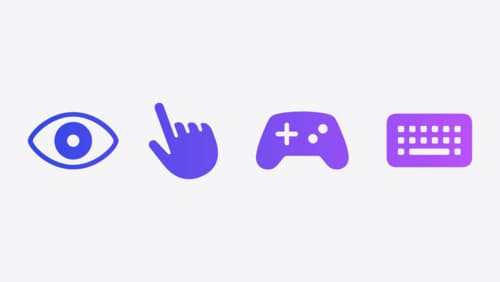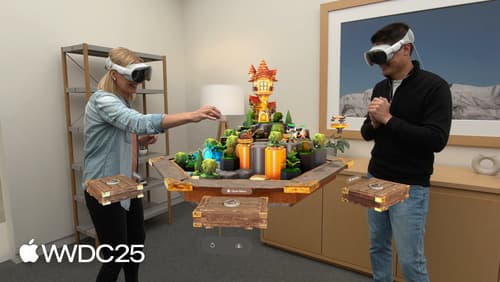what are the adventages of the
Asked on 2025-06-11
1 search
It seems like your question is incomplete. However, I can provide some insights into the advantages of using system gestures in visionOS, as discussed in the session "Explore game input in visionOS" from WWDC 2024.
Advantages of Using System Gestures in visionOS
-
Familiarity: Players are already accustomed to using system gestures as they navigate other apps and games on the platform. This means there's no need to teach them how to interact with your game, making it more accessible.
-
No Extra Equipment: System gestures do not require any additional hardware, allowing games to work right out of the box. Players can easily pick up and play anytime without needing extra controllers or devices.
-
Universal Support: System gestures are supported across all spaces in visionOS, from shared spaces to full immersion, ensuring consistent interaction methods regardless of the environment.
-
Variety of Gestures: visionOS supports a range of gestures, such as single and double taps, pinch and hold, and pinch and drag, which can be used to interact with objects directly or indirectly.
For more details, you can refer to the session Explore game input in visionOS (03:28).

Explore game input in visionOS
Discover how to design and implement great input for your game in visionOS. Learn how system gestures let you provide frictionless ways for players to interact with your games. And explore best practices for supporting custom gestures and game controllers.

What’s new in visionOS 26
Explore exciting new features in visionOS 26. Discover enhanced volumetric APIs and learn how you can combine the power of SwiftUI, RealityKit and ARKit. Find out how you can build more engaging apps and games using faster hand tracking and input from spatial accessories. Get a sneak peek at updates to SharePlay, Compositor Services, immersive media, spatial web, Enterprise APIs, and much more.

Deploy machine learning and AI models on-device with Core ML
Learn new ways to optimize speed and memory performance when you convert and run machine learning and AI models through Core ML. We’ll cover new options for model representations, performance insights, execution, and model stitching which can be used together to create compelling and private on-device experiences.
